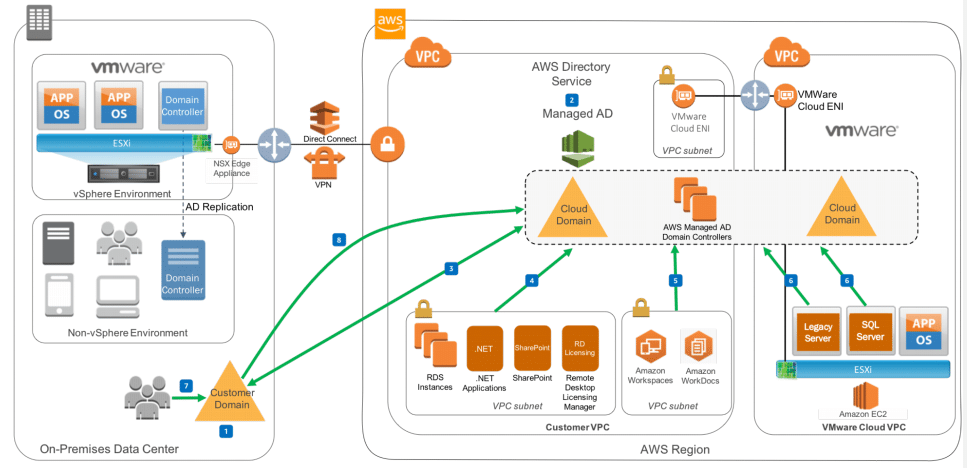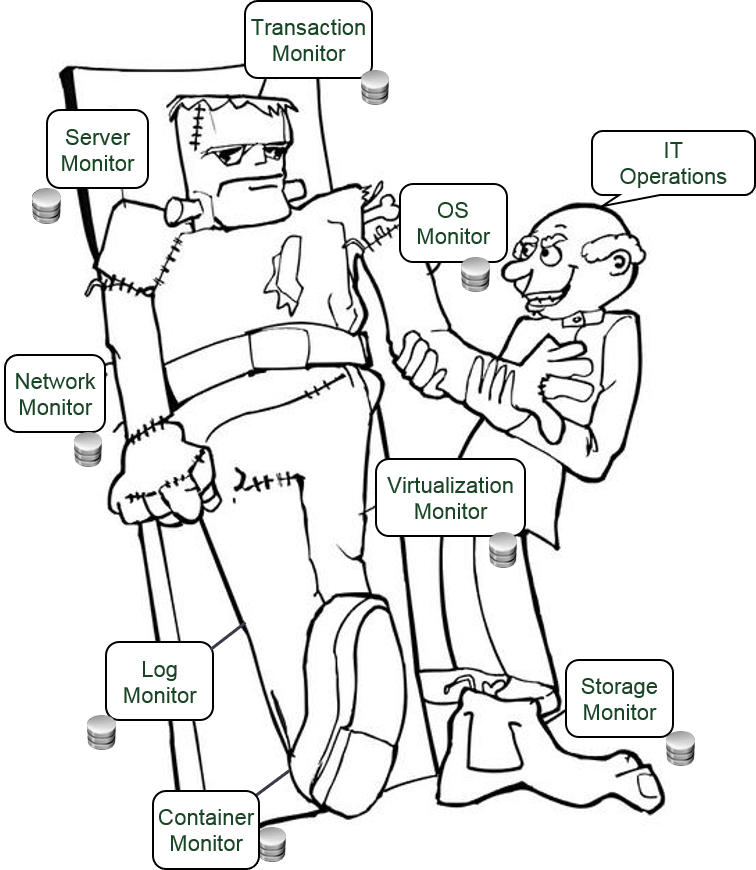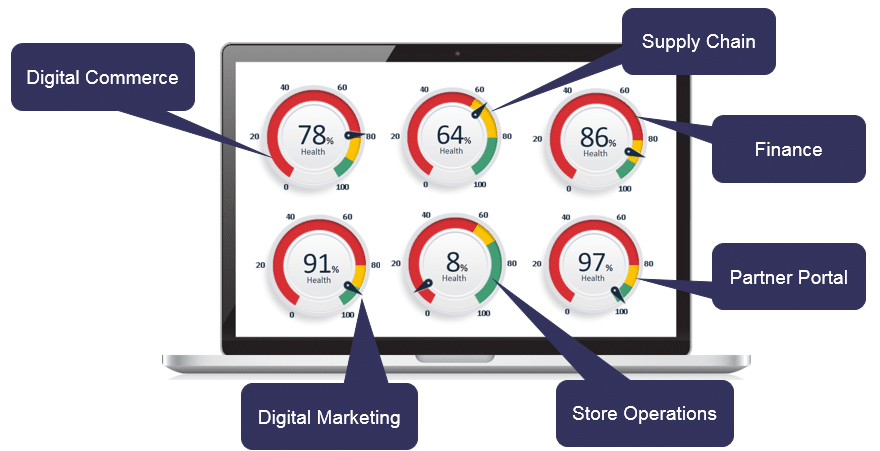Why Digital Transformation Needs AIOps
What is Digital Transformation? Digital Transformation means taking advantage of the fact the software based processes can be evolved and enhanced more frequently to dramatically drive up the business agility of the company, and to gain market share and revenue as a result. This is sometimes stated as “Compete online or die”, but it does not always have to involve people using browsers and mobile devices to access web services. The Imperative to Digitalize Core Business Processes The leading initiative for nearly every CIO (especially the ones who have rebranded themselves as Chief Digital Officers) is digitalization. Digitalization means that the key business processes of the company get implemented in software. This creates the following imperatives:
- Drive online business results – revenue, customer acquisition, customer service, customer satisfaction, market share, and reputation
- Time to Market – Implement key businesses in software more quickly than both current and emerging competitors
- Rapid and Continuous Improvement – Rapidly improve those digitized processes in order to compete and gain market share
- Great Customer Experience – Web and mobile experiences must be available all of the time, and offer excellent performance (responsiveness to user actions).
- Fast Resolution of Problems – Every online system has issues, but they need to be prevented as often as possible and solved as quickly as possible.
- Scale in Response to Demand – If the system is subject to spikes in demand (like online retail), then it needs to be able to response to dramatic increases in load without suffering from reliability and performance problems.
- Be Cost Effective – Modern application teams need to be efficient with their time and need to avoid overspending on legacy and expensive toolsets.
In summary, every enterprise must now run like a highly agile, responsive and forward thinking SaaS software product company. The infographic below shows the important Digital Transformation trends for 2019.

Industry Changes caused by Digitalization Digitalization is creating unprecedented demand for the resources (primarily the people) who know how to implement business processes in software (software developers and architects) and the people who know how to operate complex application systems in production with high reliability and performance (cloud and applications operations). The most important architectural change is the shift to a microservices architecture which allows each microservice to be independently enhanced – leading to dramatically shorter application development cycle times, dramatically increased technical and business agility and dramatically increased online competitiveness. The demand to implement business processes in software exceeds the supply of knowledgeable people, which is fueling a set of innovations designed to speed the delivery of software into production, and ease the process by which highly complex, dynamic, and scaled out applications are supported in production. Complex Multi-Cloud Architectures Today the question is not whether to do cloud, but which clouds and how many different ones will be deployed. For most enterprises an on premise private or hybrid cloud based upon VMware vSphere is a reality. For these enterprises going to the public cloud often means adding the public cloud to their environment instead of replacing their on premise or collocated environment. This means that for cloud operations teams, the cloud is a source of increased complexity, not a source of simplification.

Innovation and Dynamic Behavior across the Stack The imperative to digitalize core business processes, and the resulting shortage of people who can do the work is fueling as set of process and technology innovations designed to speed business functionality implemented in software into production. These process innovations (DevOps and CI/CD) and technology innovations (containers, and the dynamic infrastructure upon which they run) are being brought to bear to help development teams be more agile and effective to help support teams deliver better reliability and performance results to the business. These layers of innovation are shown in the diagram below.

The above architectural (microservices), and process (CI/DC) innovations, combined with the diversity in the stack, and the dynamic behavior across the stack create an unprecedented monitoring and management challenge for modern online enterprises. This challenge is compounded by a high rate of innovation which constantly increases the complexity and diversity of the environment. The Problem with Legacy Monitoring Approaches Digital Transformation produces new critical business services which must be monitored and managed holistically. However, ever since the death of the monitoring frameworks from IBM, BMC, CA and HP, monitoring has devolved into a best of breed approach leaving enterprises with between 20 and 200 different tools, none of which give the business the visibility into the reliability and performance of these new critical business services. The Franken-Monitor

Monitoring Challenges with Modern Applications, Stacks and Processes The modern application, development process, and technical stack, combined with dynamic behavior across the stack, create the following new and unprecedented challenges for monitoring solutions:
- Modern apps are highly scaled out (many things to monitor – hundreds and thousands of microservices in production)
- Modern apps are highly dynamic (high rate of change in scale and new versions – multiple releases of new software into production every day)
- Modern apps are very diverse (many different languages and stacks – with the need for developer productivity driving ever more diversity)
- Business services are often comprised of not just the modern applications, but previously developed N-Tier application, monolithic applications and purchased applications.
- As stated above, the environment spanning the on premise private cloud and the new public clouds is more complex than ever and more dynamic than ever.
- Due to the above factors modern apps are very complex and addressing issues consumes time and expensive resources. In fact Gartner predicts that, “By 2020, 75% of enterprises will experience visible business disruptions due to infrastructure and operations (I&O) skills gaps, which is an increase from less than 20% in 2016”.
Making Sure It All Works All of the Time The applications and business services that result from Digital Transformation initiatives must work all of the time, and must provide an excellent user experience all of the time in order for these new services to meet their business objectives. The technical challenges associated with managing these applications in production mean that a new approach must be taken to monitoring them in production. The following requirements must be met:
- The entire stack must now be monitored in real time (1 Min – 1 Sec) to be able to detect service quality issues in time
- Flows, relationships and dependencies across the stack must be determined in real time
- AI (AIOps) must be deployed to cope with the deluge of incoming monitoring data and automatically understand normal vs. abnormal
- AIOps and relationships must be leveraged for automated root cause and ultimately automated remediation.
- The results of monitoring must be made relevant to business constituents
The Need for Business Visibility Since these new software based business services are so critical to the business, business constituents like product managers and business executives responsible for the results of these services need consolidated visibility and manageability across the entire stack of technologies that comprise each service. Centerity’s Dynamic Service Views provide this visibility. Centerity’s Dynamic Service Views Centerity’s Dynamic Service Views consolidate the availability, performance, throughput, and error rate of the entire software and hardware stack that supports each critical business service into a service level gauge that allows business constituents to easily understand how the business services supported by these stacks are actually working.

The Centerity AIOps Platform Centerity delivers these Dynamic Service Views through a comprehensive AIOps platform that works with the existing monitoring tools, virtualization platforms and cloud platforms in use at the customer. Metrics, events and logs are collected across the entire stack, and evaluated by an AIOps engine for anomalies. Degradations in service levels are the surfaced in Dynamic Service Views and forwarded to alert and service management systems.
Centerity Functional Overview

Summary Modern business services are composed of new applications, existing applications, custom developed applications and purchased applications. The software and hardware infrastructure for these new business services is updated frequently and operates in a dynamic manner. This creates a new imperative to be able to monitor the resulting business services in a continuous and full-stack manner.




Leave a Reply
Want to join the discussion?Feel free to contribute!